Power consumption and clock rates of the three power modes
Before we overclock, we want to contrast the three predetermined modes for performance. From left to right we see the Power Save mode with 212.8 watts, the Balanced mode with 280.2 watts and the Turbo mode with 316.1 watts, as well as the corresponding clock rates.
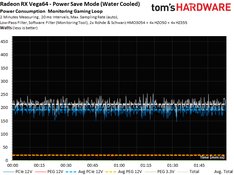 |
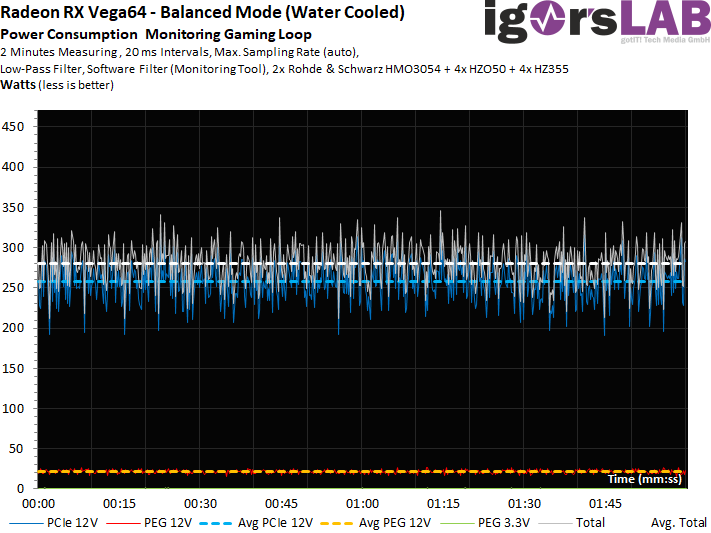 |
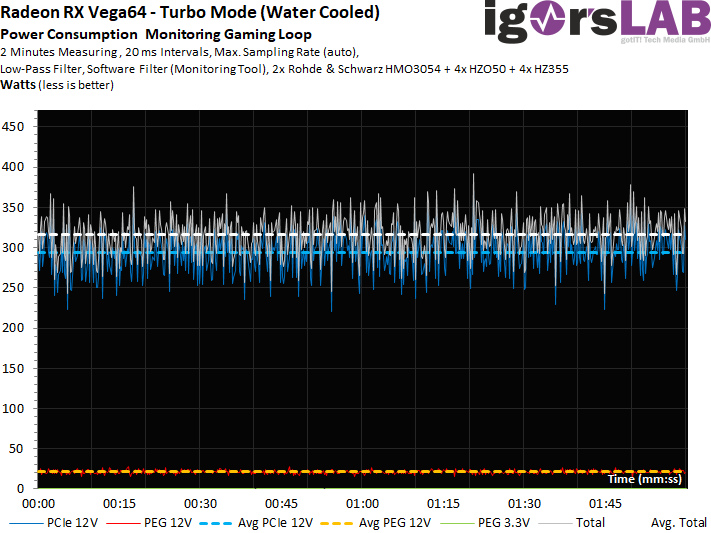 |
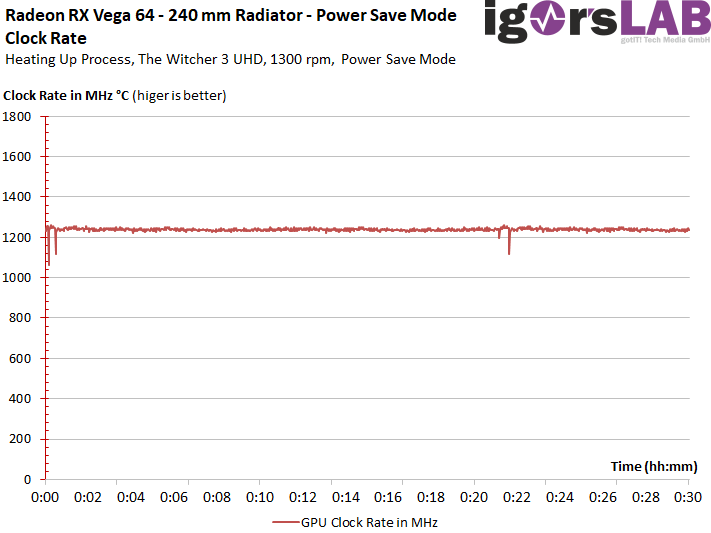 |
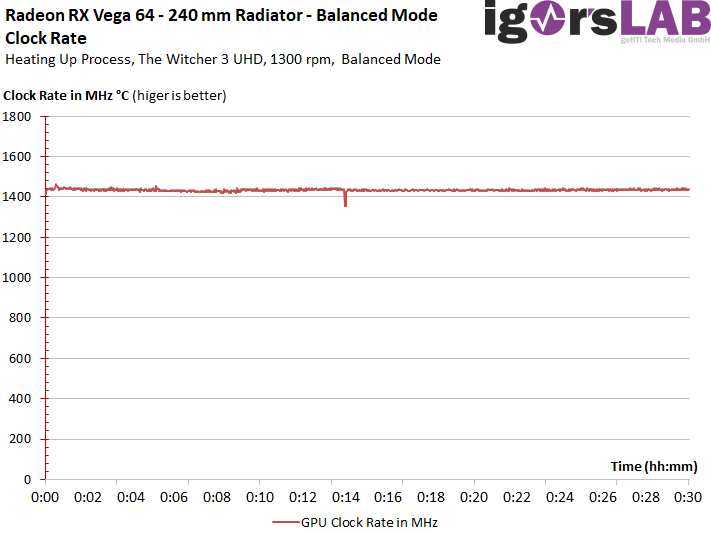 |
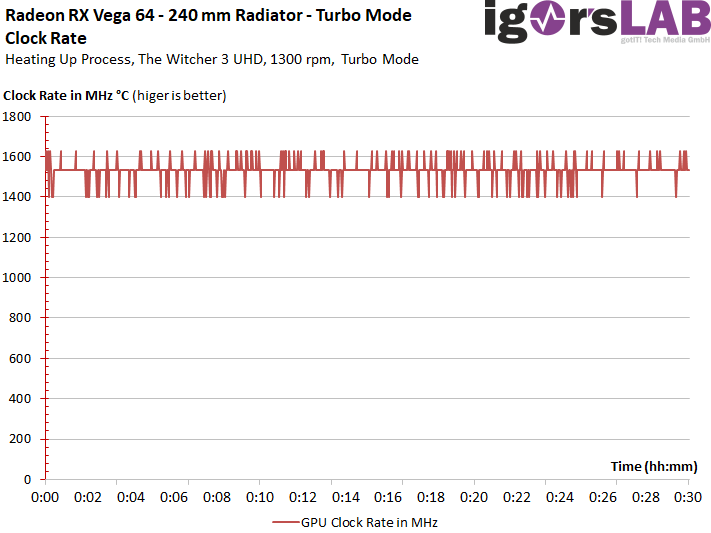 |
While the Power Save Mode and the Balanced Mode still operate at fairly balanced clock speeds, it gets really hectic in turbo mode. We can see that the card is already being severely slowed down by the Power Limit. If you are wondering why the values differ from those of the air-cooled card from the launch test, you should also keep in mind that fans and LED bums are omitted here and the clock rates are also different.
Overclocking with Maximum Power Limit
Since the Wattman still works erroneously and unstable in the version submitted on the weekend before the launch, we have had to invest plenty of time and nerves in order to achieve reproducible and above all stable results. AMD itself recommended first setting the power limit to the maximum of +50%. That is exactly what we did.
With the 402.4 watts measured over a longer period of time, you can achieve quite exactly the absolute limit of 400 watts set by AMD for the Vega64, which was stored internally and cannot currently be exceeded with trickery. Higher measured values are therefore definitely wrong. But also the 400 watts are a real house number. For comparison, quickly again the bar graphic:
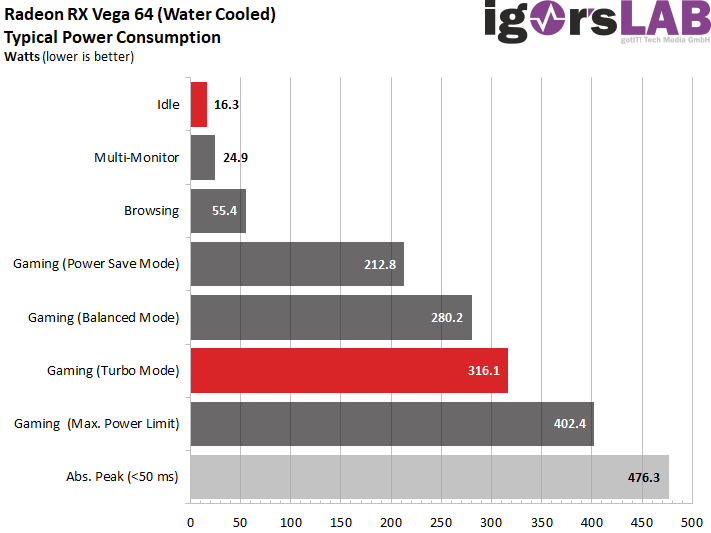
But what can you achieve with such a massive 400 watt power input? If we leave out the unrealistic peaks of just under 1800 MHz achieved without real 3D load in AutoCAD 3D and focus instead on real averages in real games, which can also be kept stable and clean for over 30 minutes, then the result (always depending on the required performance) is much leaner.
So either we caught an absolute potato chip, or other testers had Golden Samples or have used outdated, faulty drivers (see introduction). Added to this is the fact that Wattman is currently almost unusable for filigree tested overclocking despite the update. The manual clock and voltage specification of the two highest DPM states is man-made and very quickly leads to unexpected behavior (up to crashes). Only the percentage rate increase could be used in the first place.
Unigine Heaven in the lowest settings still managed to get to just under 1.7 GHz in Full HD, while Doom in Ultra HD only ran stable up to 1673 MHz. Our stability test Witcher 3, on the other hand, only manages to achieve 1.6 GHz in Ultra HD. All this is another indicator that the supply of performance is the limiting factor.
Bar vs. Gaming performance
Depending on the game, the OC can set the bar between approx. 12 to 18% stable before crashing. We have therefore run different games in balanced mode (as with the launch) and in the short-term stable, maximum possible OC. In contrast to Witcher 3 and Doom, due to time constraints, we have dispensed with the very long-term stability tests of the remaining games. However, these benchmark results also show us that we were not so wrong.
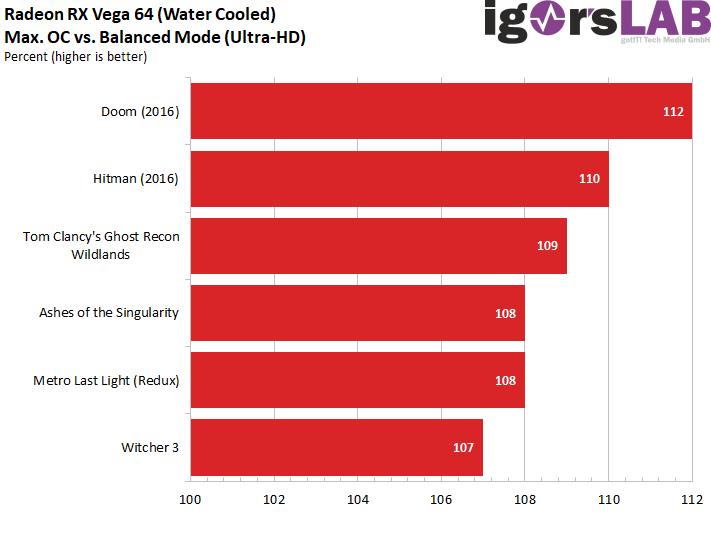
A meagre 12% performance gain at 18% more clock in Doom is not a fat yield and the 7% more performance at 11% more clock in Witcher 3 is not either. Considering that you can use this 7% in Witcher 3 with a approx. 120 watts of higher power consumption, i.e. 44%, then that is already grotesque. Overclocking is possible, but it does not actually make sense anymore. What didn't go clean before, it won't do any better after overclocking and suddenly become playable.
A little note about memory. With a bit of luck, it can be overclocked at around 1 GHz, but this should NOT be done with the air-cooled card, because then it already becomes borderline hot. But the whole thing didn't really bring anything to measure with the titles tested. In sum, such a thing may bring more to one or the other FPS, but this almost falls within the range of measurement tolerances.
What's the point of subvolting?
What still produced quite decent results for Hawaii, Fiji and Polaris is a very uncertain matter with the current software at Vega with no real added value. The manual lowering of the voltage specifications for the two highest clock levels either crashed completely or caused the clock to drop significantly. We definitely cannot confirm the overclocking successes caused by lowering tensions.
Whether this in turn is due to the possibly bad chip, the unfinished software or simply our honesty towards the actual facts, we cannot confirm in the absence of other cards. You don't have to lie to yourself to produce supposed sensations. We couldn't use the Vega FE for comparison, because the current last driver for the RX Vega blocks the gaming mode (and thus also the Wattman) completely for the Vega FE.
Cooling at 400 watts power consumption and maximum OC
But how do you get rid of the 400 watts recorded as elegantly as possible? The GPU temperature in Witcher 3 is just under 52°C after 30 minutes, and the trend is constant. This is acceptable for an AiO compact solution with a still quite small 240 radiator and hardly better to get.
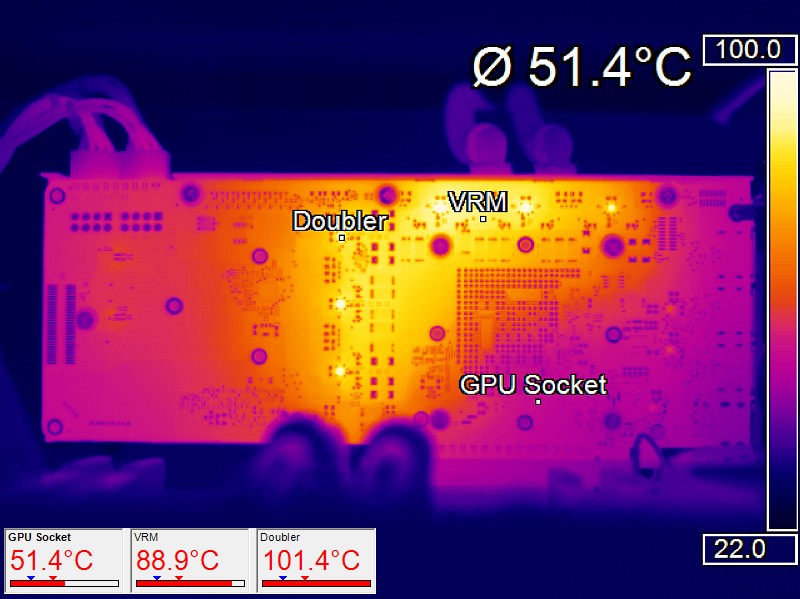
If you like it really quiet (and even cooler), you should immediately bet on a 360 or 480 radiator. Then you could also include the CPU in the cooling circuit (the GPX-Pro does it), because quick-release fasteners are a fine and convenient thing.
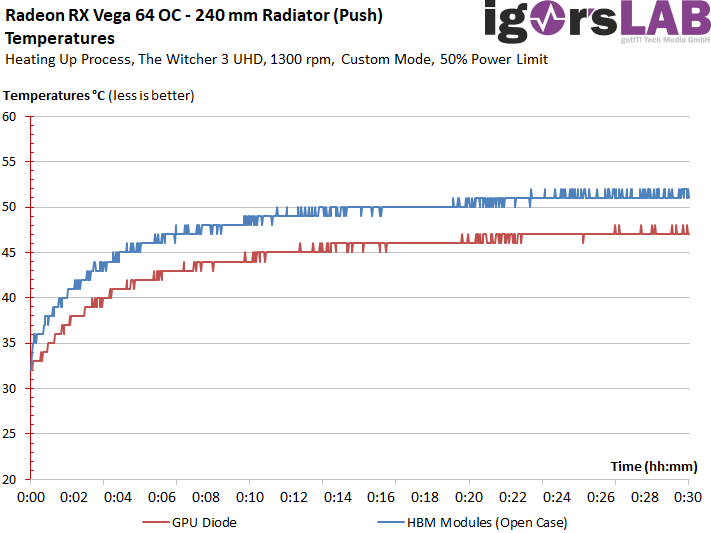















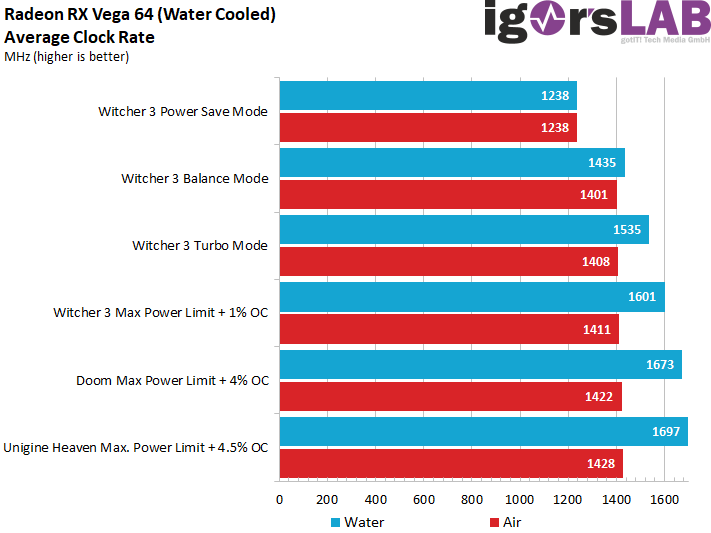

















Kommentieren